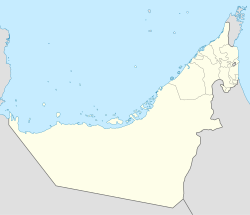Wadi Abadilah | |
|---|---|
| Coordinates: 25°26′18″N56°11′29″E / 25.43833°N 56.19139°E | |
| Country | United Arab Emirates |
| Emirate | Fujairah |
| Elevation | 255 m (837 ft) |
WadiAbadilah is a wadi in Fujairah, United Arab Emirates, which runs North East towards the coast at Dibba. [2] At Masafi, it forms a confluence with the Wadi Ham, which runs South East towards Fujairah City. [3]
